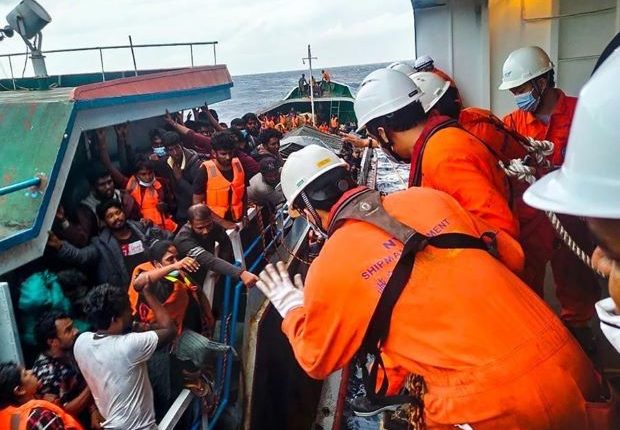IOM to provide humanitarian assistance to 303 Sri Lankan migrants rescued at sea

COLOMBO — The International Organization for Migration (IOM) announced on Monday (14) that it was providing humanitarian assistance to 303 Sri Lankan migrants rescued off the coast of Vietnam last week, and that in addition to providing basic necessities, it will, along with partners involved in the humanitarian assistance, facilitate the potential voluntary return of the migrants, should they wish to do so.
The Sri Lankans, including 20 children, were rescued by Japanese-flagged ship on November 8, after their boat, a Myanmar-flagged fishing vessel, began taking on water round 250 nautical miles off Vung Tau on Vietnam’s southern coast. Vietnam’s Maritime Search and Rescue Coordination Centre said the boat was thought to be heading to Canada, about 6,000 nautical miles across the Pacific Ocean.
Authorities in Vietnam have said the migrants were being housed in Ba Ria, in the Vung Tau province.
In a media release issued on Monday, IOM said, responding to a request from the Sri Lankan Embassy in Hanoi, it was, in coordination with the Governments of Vietnam and Sri Lanka, the IOM missions in both countries and relevant UN agencies, providing necessary assistance and protection in line with the relevant local and international standards and laws.
IOM also said it appreciated the Government of Vietnam’s willingness to offer a place of safety and assist the 303 vulnerable Sri Lankans, while IOM, the Government of Sri Lanka and other counterparts conduct vulnerability screenings and necessary assessments to ascertain the situation.
“Once the assessments are completed, in addition to providing basic necessities, including food and medical aid, IOM and partners will facilitate the potential voluntary return of the migrants, should they wish to do so,” the IOM said, adding that it stands ready to support the Government of Sri Lanka and Vietnam in their efforts in making migration safe and dignified, supporting migrants and communities in vulnerable situations, and addressing the adverse drivers of migration and displacement.
-ENCL


Comments are closed, but trackbacks and pingbacks are open.